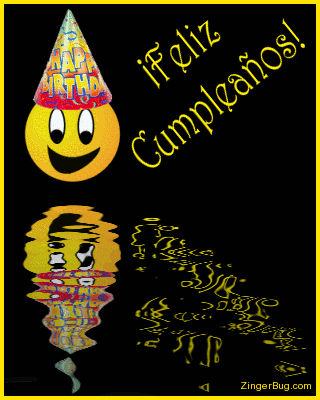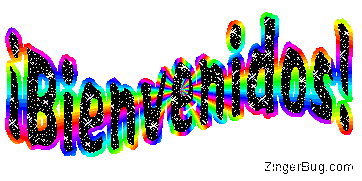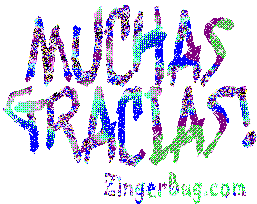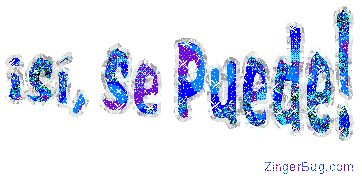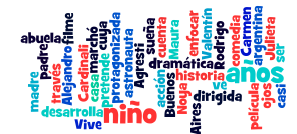Using small white boards in your teaching is a great strategy. They can be used in any subject area, and they are great for teaching a World Language. For some reason students think that everything is more fun if you do it on a white board! When my students do the activities below, they are always very engaged.
If you don't have any small white boards, I would recommend going to Lowe's. When I got mine, I went there, and the price was great! You can purchase a large piece of white board, and they will cut it up into smaller pieces for you at no extra charge. I believe it was $11 for one large piece. I had them cut one large piece into about 15-20 small boards for me. Then I had them cut a second large piece into about 5 medium sized boards to use with groups.
If you want to save money on buying erasers, you can cut up an old t-shirt. This is also a good technique because when they get dirty you can just through them into the washing machine for easier cleaning.
If you have your students use the white-boards often, you will probably go through a lot of dry-erase markers. At the beginning of the year, I sent home a classroom supply wish list with my letter to parents (in middle school and high school). I always asked for a box of dry erase markers from everyone that could afford to donate one to our class. This way I normally had a good supply that lasted me for the entire school year. If you run out, you can send home another wish list to parents around the winter holidays.
8 Great Ways to Use White Boards
1. Numbered Heads Together
I use this formative assessment as a review game at the end of each unit I teach. I put the questions and answers on a PowerPoint, and then I have student groups answer on small white boards.
- Divide students into groups of 3-4 students, and have them turn their desks around so they are facing each other, and can work as a group.
- I allow my students to use any resources they want for the game (textbook, notes, dictionary, etc.).
- Ask all students to get out a piece of scrap paper.
- Set a small white board for each group facing forward up on the ledge of your white board in the front. Write the group numbers in the corner of each board.
- I then give each group a number, and I also give each student an individual number.
- When you are ready, put a question up on the overhead/PowerPoint that is similar to a question you would ask on a test. It should be a question with a fairly short answer.
- Ask students to work together to figure out the answer as a team. Then they need to TEACH everyone on the team their answer because they do not know who will be called.
- I often have students translate sentences from English to the target language for this game.
- Use a spinner, or randomly call out a number (Ex. All the # 4's come up!). The student with that number from each team needs to come up to their team board (they cannot bring their notes, or speak with their group members anymore at this point) and write down their answer.
- Then they should put their board back facing backwards so that no one can see their answer and sit at their desks.
- Now ask all the students what they think the answer is. After they respond, show the correct answer on the overhead, or PowerPoint. Turn around each board to check if the teams answer is correct. If it is, give them one point.
- The team with the most points at the end is the winner! You may choose to give them a bonus point on their next quiz or test!
2. Pictionary
I have students play this game to practice fairly new vocabulary. Students draw the vocabulary words, and their classmates guess in the target language.
- Divide students into teams of about 4.
- Give each student a list of vocabulary words (or ask them to open up to a page in their book, or notes). Or, cut up words on pieces of paper, and put the word strips in an envelope. Students can draw a word out of the envelope instead of choosing their own word.
- Give each team a small white board, an eraser, and a dry-erase marker.
- Students take turns by passing the board around clockwise or counter clockwise so that everyone has an even amount of turns drawing.
- The first student to go selects a vocabulary word and draws it. Their teammates guess. The first student to guess correctly gets a point. Students can keep track of their points on a piece of scrap paper, on another white board, or on their desks if they work with dry-erase markers.
- Students should have the boards down while they are drawing so that the other students can see them and guess while they draw. They should not draw the entire picture and then flip the board around for guessing.
- If your students just shout out any random word, you may need to limit them to three educational guesses each (especially at the middle school level ;).
3. Tutoring/Working One-on-One with Students
Last year, I started tutoring students in French and Spanish outside of school. Whenever I tutor, I bring one or two small white boards, a couple markers, and an eraser in my tutoring bag. My students really preferred to write their answers to practice questions, or worksheets on the white boards instead of on a piece of paper. Also, when they needed me to explain, or re-teach them a concept, I would write it on the board as I went. This visual helped them, and they preferred it to me writing notes for them on paper. We also used the boards for some of the review games and strategies in this post (Pictionary, Brainstorming, etc.) You can also ask students to re-teach the concept to you on the board to check for understanding. The same strategies can be used with your students who you might give extra help during lunch, or after school.
4. Brainstorming
This is a great way to review, or to activate prior knowledge before teaching a new concept.
- Divide students into pairs, or groups of 3-4.
- Give each group one larger size white board, markers, and an eraser.
- Have students choose a "writer", take turns writing, or they can all write from the angle they are sitting at.
- Give them a topic or theme to brainstorm about. For example, I might say, "Write down as many food related vocabulary words as you can think of in French". You could do this to review before an assessment, or to activate prior knowledge if they already know some food vocabulary, and you are about to teach them more.
- You could also have them do this to review cultural concepts, or grammar concepts. You could ask them to write down as many French dining customs as they can think of, or a list of grammatical rules to follow for using object pronouns.
5. Think-Pair-Share
- Give each student a small white board, a marker, and an eraser.
- Give your students a topic. Have them think of as many words as they can related to that topic, and write them on their small boards.
- Give them a reasonable time limit (1-2 minutes).
- Now have them find a partner, and share their answers with each other. After it looks like they are done sharing give them a minute to see if they can think of more words that neither one of them has yet to add to their list. They can write the new words on either board.
- Now have each pair, find another pair so that they are in groups of 4. Give each group of four a larger white board to use to create a master list of all their words. When they are done with their master lists give them one more minute to add any more words that they can think of.
- When time is up have them count their unique words. The group with the most words is the winner!
- Have that group share their list with the class.
6. Q & A or Ask & Lift
This technique is great for having students answer questions with short responses such as one word, verb, or pronoun. It can also be used for True/False questions, or Agree/Disagree questions. I often used this game with students to practice verb conjugations.
- Give a small board to each student, pair, or group depending on how many small boards you have.
- When doing pairs and groups you might give each duo or pair a number to write in the upper corner of their board if you want to keep score.
- Put group numbers up on the board, and add points as you play.
- You can assign points based on speed and accuracy, or just on accuracy. I normally start out playing for accuracy, and tell students we are getting "warmed up".
- Call out a question to students and ask them to write their answer on their boards. They may consult with their partner, or group.
- When it looks like everyone has answered, you can say "Lift your boards!", in English or the target language. Check each board for the correct answer, and give points accordingly.
- Have students pass their boards to their partner, or the next person in their group for the next question. Students should each have an equal number of opportunities to write. (They often figure out who is the fastest writer, and try to have that person do all the writing, so watch out for this).
- After doing a few questions for accuracy, switch to speed and accuracy, or what I called "The Speed Round". As soon as students have answered they may lift up their boards to try to get a point. If they are first and correct, they get a point. However, if their answer is incorrect, I tell them, and they can try again. If another group lifts up their board and is correct before they correct their error, then the other team gets the point.
- During the speed round sometimes it is difficult to see which group lifts their board first. If I'm not sure and both teams have it correct, I give them both a point to be fair.
7. Peer Teaching/Short Group Presentations
The larger white boards are great if you are having groups do a short in-class assignment, and then you want them to present their findings to the class. You can also have groups teach their peers a new concept. This strategy can also be used for review. You can have each group write out a short review for a concept on their board. The boards work well because they are about the size of a poster board.
- Give each group a larger white board, some markers, and an eraser.
- Give groups their assignment, and have them create a "poster" of it on their group board. They can use words and pictures.
- Have groups come up and present their boards to the class when they have finished.
8. More Formative Assessments
You can also use small white boards for quick formative assessments. These assessments can be done on paper, or with the boards. They are good because they give you some immediate feedback on how well students are understanding the topics that they are learning.
- Give each student a white board, marker, and eraser.
- Choose one of the formative assessments below:
- Analogy Prompt
- Give students a concept, principal or process being studied.
- Have students write an analogy on their board and then lift it up to show you, or read it to the class.
- Ex. ____________________ (a designated concept, principal, or process) is like_________________because __________________.
- Self-Assessment
- Write the current learning goal/objective on the board.
- Ask students to reflect what they have learned about a topic related to the goal.
- Ask students to rate themselves on a scale of 1-10 (1 being they still need help with understanding, and 10 being they have mastered the goal).
- Ask them "Where do you fall?", and have them write their number on their board and lift it up and show it to you.
- ABC Summaries
- Assign each student or pair a letter of the alphabet, and give them a small board.
- Ask them to select a word that starts with your letter that is related to the topic being studied.
- This is a great way to review vocabulary in a world language class. For example, the topic could be shopping, and students would have to think of a French or Spanish clothing item or shopping related vocabulary word that started with their letter.
- When they have all finished ask them to raise up their boards, or share their answers with the class one by one.
- For less common letters, you may want to assign them a few letters to choose from ("Q or S", "X, Y, or Z").
- One Word Summary
- Give each student or pair a board.
- Give them a topic they are learning about, and write it on the board.
- Ask them to select (or invent) one word that best summarizes the topic, and to write in on their boards.
- Have them share their answers with the class, and explain why they chose their word.
- Misconception Check
- Give each student or pair of students a board.
- Select a common misconception about the topic being studied, and write it on the board as a statement.
- Ask students to write T/F, or Agree/Disagree on their board based on if they think the statement is accurate or not.
- When they have all finished, ask them to lift up their boards.
- Count the number of boards that say True, and how many say False.
- Ask a student that chose False to explain their reasoning to the rest of the class.
- Ex. A common misconception in beginner Spanish classes-"Yo tuve divertido"=I had fun. True or False?(Answer: False. The correct translation is "Yo me diverti").









